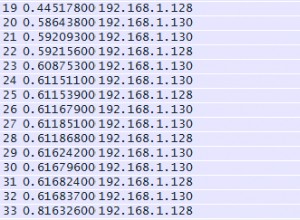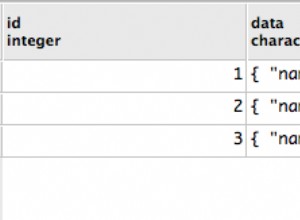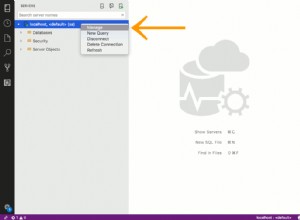Come indicato nella pagina del manuale
, ALTER TABLE richiede la definizione di tutti i nuovi attributi di tipo.
Tuttavia, c'è un modo per superare questo. Puoi utilizzare INFORMATION_SCHEMA metadati
per ricostruire il ALTER desiderato interrogazione. ad esempio, se abbiamo una tabella semplice:
mysql> DESCRIBE t; +-------+------------------+------+-----+---------+----------------+ | Field | Type | Null | Key | Default | Extra | +-------+------------------+------+-----+---------+----------------+ | id | int(11) unsigned | NO | PRI | NULL | auto_increment | | value | varchar(255) | NO | | NULL | | +-------+------------------+------+-----+---------+----------------+ 2 rows in set (0.01 sec)
quindi possiamo riprodurre la nostra dichiarazione alter con:
SELECT
CONCAT(
COLUMN_NAME,
' @new_type',
IF(IS_NULLABLE='NO', ' NOT NULL ', ' '),
EXTRA
) AS s
FROM
INFORMATION_SCHEMA.COLUMNS
WHERE
TABLE_SCHEMA='test'
AND
TABLE_NAME='t'
il risultato sarebbe:
+--------------------------------------+ | s | +--------------------------------------+ | id @new_type NOT NULL auto_increment | | value @new_type NOT NULL | +--------------------------------------+
Qui ho lasciato @new_type per indicare che possiamo usare la variabile per quello (o anche sostituire il nostro nuovo tipo direttamente per interrogare). Con la variabile che sarebbe:
-
Imposta le nostre variabili.
mysql> SET @new_type := 'VARCHAR(10)', @column_name := 'value'; Query OK, 0 rows affected (0.00 sec) -
Preparare la variabile per istruzione preparata (è una query lunga, ma ho lasciato delle spiegazioni sopra):
SET @sql = (SELECT CONCAT('ALTER TABLE t CHANGE `',COLUMN_NAME, '` `', COLUMN_NAME, '` ', @new_type, IF(IS_NULLABLE='NO', ' NOT NULL ', ' '), EXTRA) AS s FROM INFORMATION_SCHEMA.COLUMNS WHERE TABLE_SCHEMA='test' AND TABLE_NAME='t' AND [email protected]_name); -
Preparare la dichiarazione:
mysql> prepare stmt from @sql; Query OK, 0 rows affected (0.00 sec) Statement prepared -
Infine, eseguilo:
mysql> execute stmt; Query OK, 0 rows affected (0.22 sec) Records: 0 Duplicates: 0 Warnings: 0
Quindi il nostro tipo di dati verrà modificato in VARCHAR(10) con il salvataggio di tutti gli altri specificatori:
mysql> DESCRIBE t; +-------+------------------+------+-----+---------+----------------+ | Field | Type | Null | Key | Default | Extra | +-------+------------------+------+-----+---------+----------------+ | id | int(11) unsigned | NO | PRI | NULL | auto_increment | | value | varchar(10) | NO | | NULL | | +-------+------------------+------+-----+---------+----------------+ 2 rows in set (0.00 sec)




